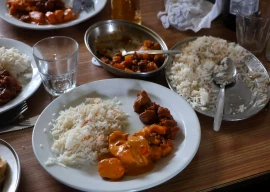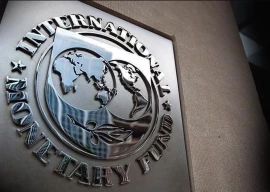
Khyber-Paktunkhwa is ready for floods in monsoon. The Provincial Disaster Management Authority (PDMA) has prepared a Monsoon Contingency Plan 2011 to cope with flood activities in Khyber-Pakhtunkhwa (K-P).
The 68-page plan aims to enhance the effectiveness and timeliness of dealing with emergency situations through mitigation measures and clarification of goals, strategies and responsibilities of PDMA.
It also aims to anticipate and overcome difficulties faced by the authority, while also strengthening coordination between provincial government departments, district governments, humanitarian organisations including United Nations agencies and non-governmental organisations.
According to the plan, concentrated rainfall during monsoon, augmented by melting snow in summer, is the main cause of floods in K-P. Flooding in the Indus basin occurs between July and September, when the region is subjected to heavy monsoon rainfall, according to the plan.
The report also highlights the devastation caused in the province due to last year’s floods and takes the last year’s shortcomings of emergency response into account. These shortcomings include inadequate flood protection mechanisms, absence of warning systems, encroachments and other factors which resulted in severe destruction in the province.
The document terms K-P PDMA as the “focal point” in flood preparations and minimising the destruction in the province, besides its crucial role in recovery and rehabilitation process.
The plan says PDMA will coordinate with the government departments and autonomous agencies and provide early warnings and relief operations, besides addressing the needs of vulnerable people.
The plan estimates that water flow in Kabul, Swat and Indus rivers would be similar to 1929, and says that planning has been done keeping last year’s floods into consideration. It has been estimated that approximately 180,550 households or a population of 1,080,000 would need relief support, while 150,000 people are likely to be cut off for 10-15 days. These include 50,000 people in Kohat, 30,000 in Upper Dir and 20,000 in Shangla.
District-wise 10,000 households in Peshawar, 20,000 in Charsadda, 25,000 in Nowshera, 16,500 in Tank, 40,000 in Dera Ismail Khan, 10,000 in Upper Dir, 8,000 in Lower Dir, 20,000 in Kohat, 12,500 in Swat, 3,000 in Lakki Marwat, 5,000 in Chitral, 2,000 in Mansehra, 3,000 in Malakand Division, 4,000 in Shangla, 1,550 in Kohat and 1,000 in Karak and Hangu will be affected.
The plan also contains maps of districts which have been prepared according to vulnerability of population, roads and waterways that are likely to overspill. The document also includes a need-gap analysis (a technique for determining the steps to be taken in moving from a current state to a desired future-state) of all districts, including evacuation centres.
The PDMA has set up a Provincial Emergency Operation Centre as well which will continue to work till the rehabilitation process is complete. Apart from that, funds have been allocated to the district coordination officers to warn the residents if needed.
Published in The Express Tribune, July 15th, 2011.





1725601283-0/Friends-Cast-(1)1725601283-0-270x192.webp)




1724268870-0/Supreme-Court-of-Pakistan-(2)1724268870-0-270x192.webp)











COMMENTS
Comments are moderated and generally will be posted if they are on-topic and not abusive.
For more information, please see our Comments FAQ